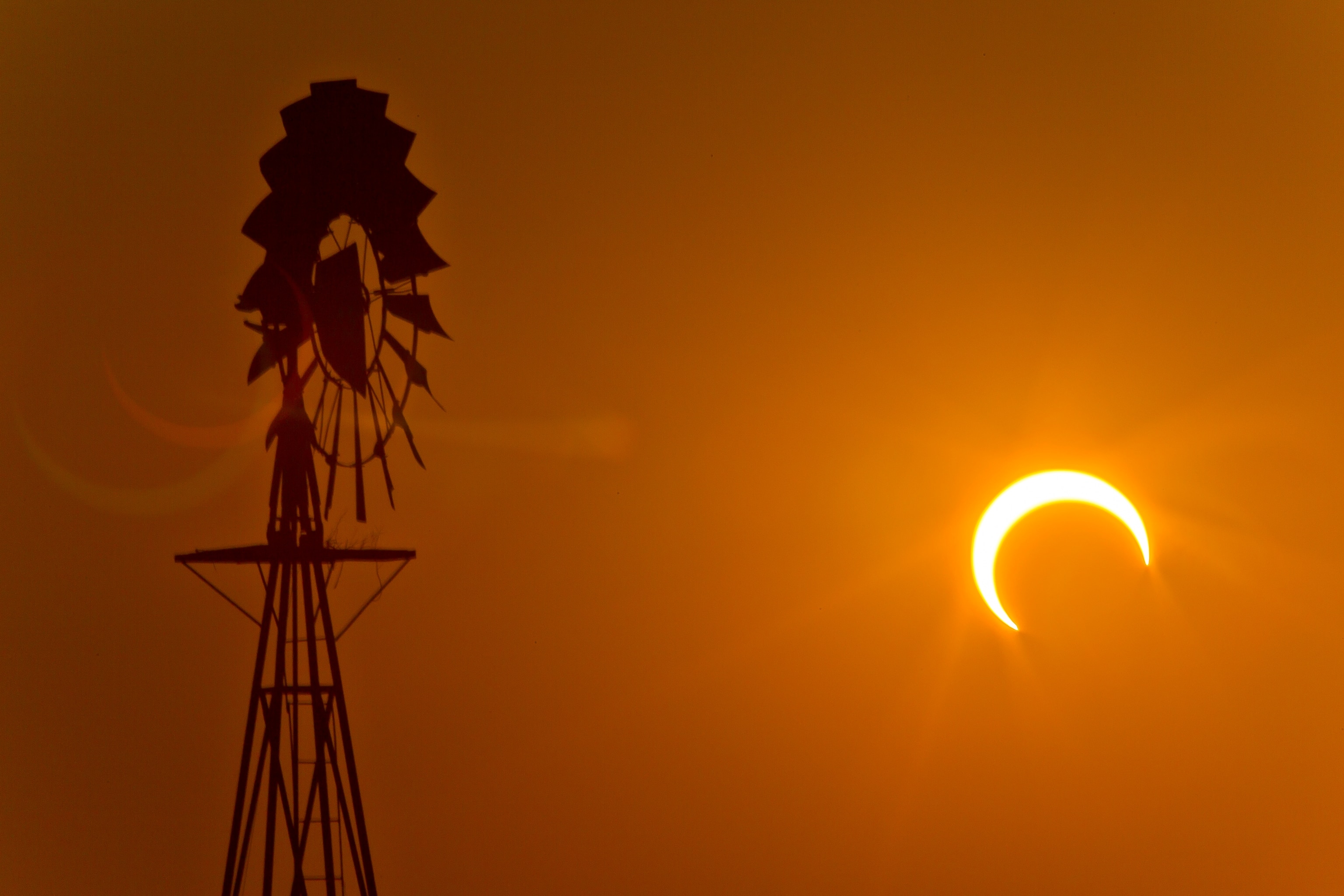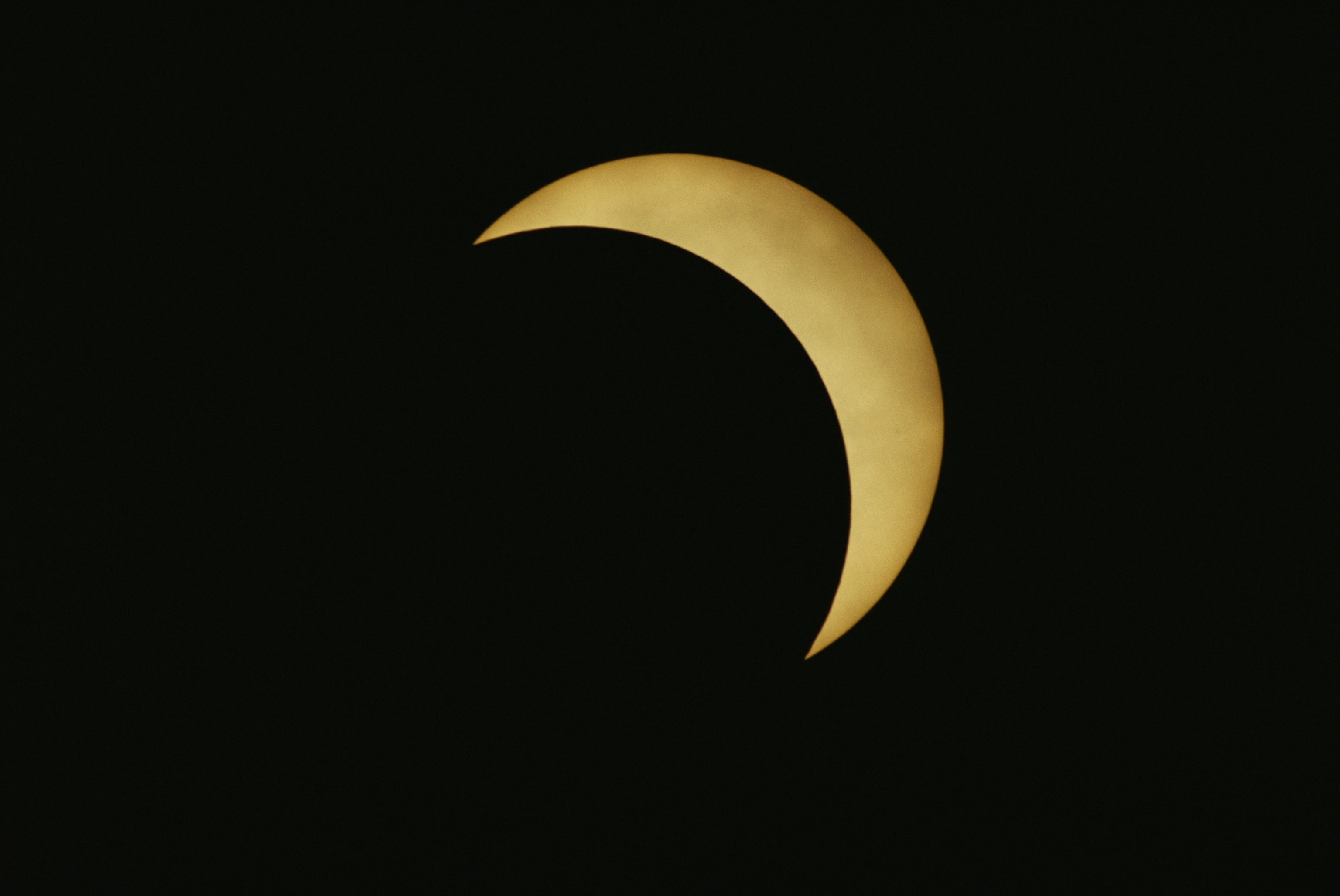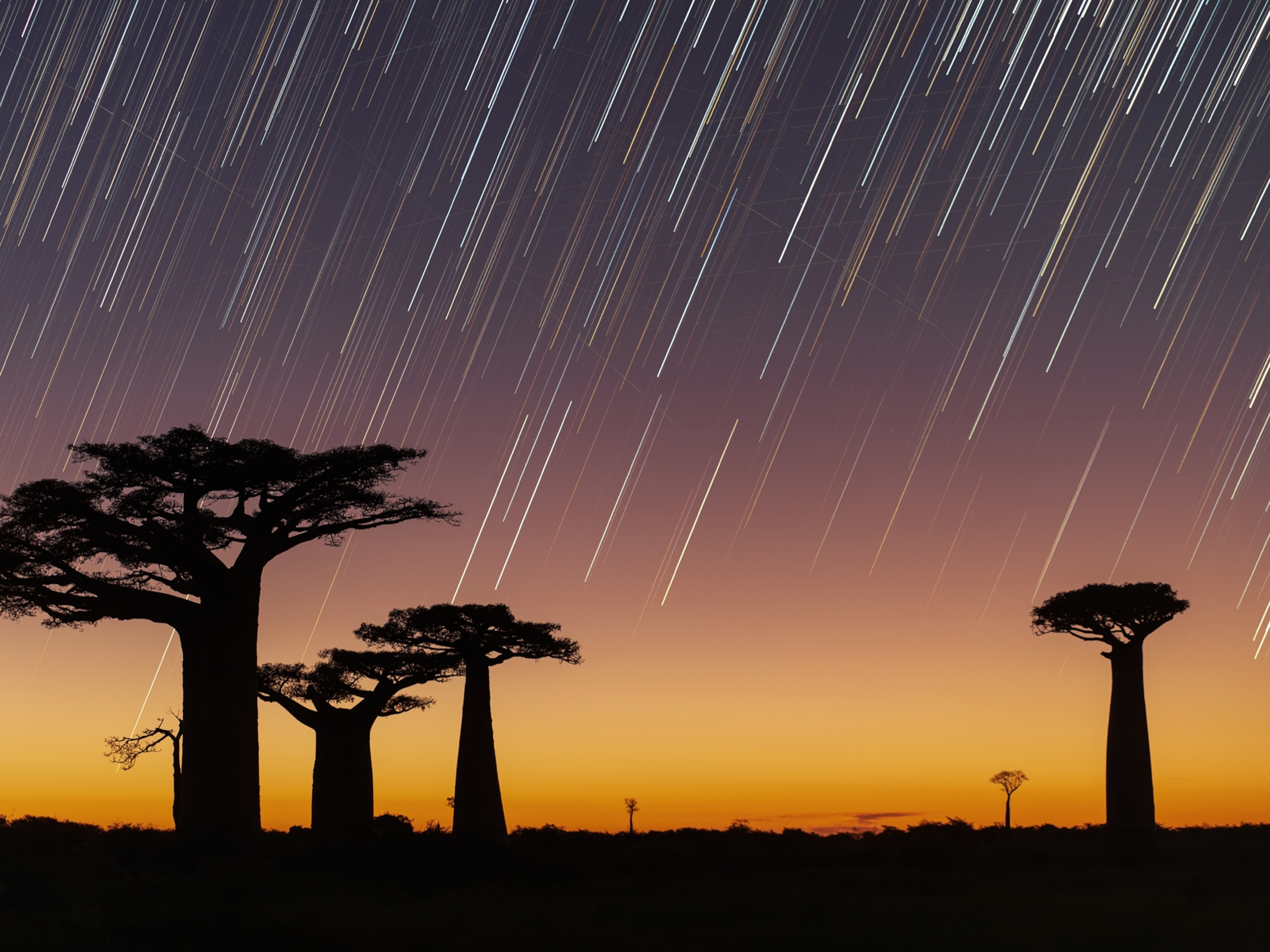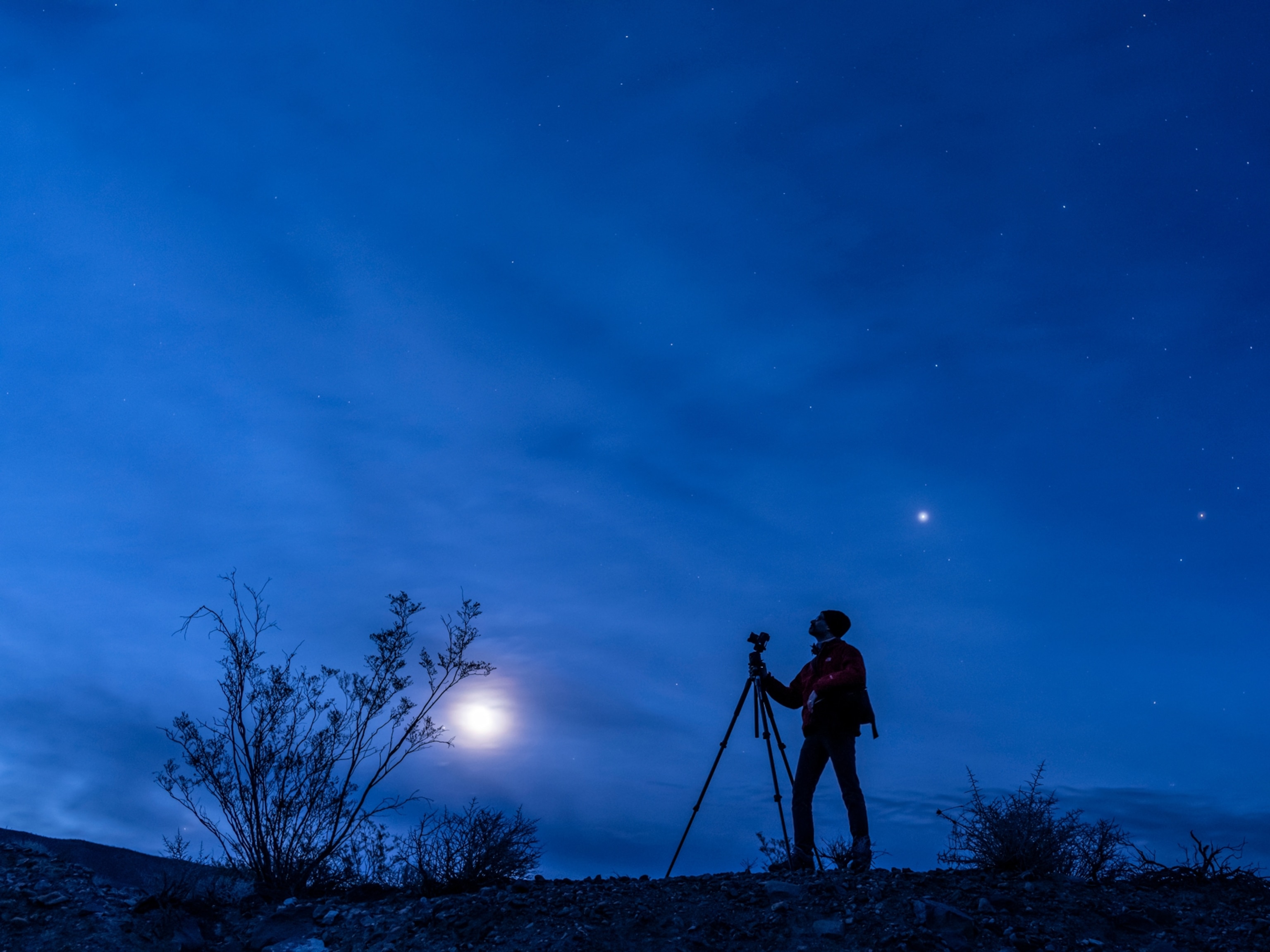
Friday's Trifecta: Supermoon, Solar Eclipse, Spring Equinox
This week sees a rare combo of total solar eclipse, perigee moon, and the first day of spring.
Friday, March 20, will see an astronomical triple play when a rare total solar eclipse occurs on the same day as the vernal equinox, and a supermoon makes an appearance.
A total eclipse occurs when the moon comes between Earth and the sun, casting a lunar shadow onto the Earth’s surface along a narrow, 62-mile-wide (100-kilometer) path. Because this “black hole” effect lasts for only a couple of minutes, totality ends up being a truly rare event for any single spot on Earth—occurring about once every three centuries for each geographical location.
Friday’s eclipse will race across remote regions of the North Atlantic and the Arctic Ocean, so only a relatively few lucky souls will be able to see it. But people in large parts of Europe and in northern areas of Africa and Asia will get to enjoy at least a partial solar disappearing act.
Adding to the uniqueness of the total eclipse, it falls on the vernal equinox, which officially occurs at 22:45 GMT (6:45 p.m. EDT) and marks the beginning of spring. While the occurrence of an eclipse on the equinox is considered a cyclical event and is not that rare, this celestial combination won’t occur again until 2034.
If that isn’t special enough, the sun will be covered by a supermoon, which occurs when the moon is at its perigee, or closest distance to Earth. That makes the moon’s disk appear about 15 percent bigger than average. Most sky-watchers won’t be able to see this supermoon, however. Since a solar eclipse can occur only during a new moon, the supermoon will be visible during the eclipse just as a silhouette in front of the solar disk.
What are the best places to see the total solar eclipse?
Folks on land will have to be positioned along a thin strip of the Earth that stretches about 3,600 miles (5,800 kilometers) from southernmost Greenland, across the Danish Faroe Islands and Norway’s Svalbard Islands, where the shadow will make its final landfall. The eclipse’s path then moves on toward the North Pole, where the lunar shadow will leave the Earth.
The eclipse begins at 7:41 GMT, reaches its peak at 9:45 GMT, and ends by 11:50 GMT. The longest duration of totality—2 minutes and 4 seconds—will be visible from the Faroe Islands.

Where will the partial eclipse be visible?
Viewers in a broad track stretching for thousands of miles across most of Europe, northern Africa, and northern Asia will see a striking partial eclipse.
For these people, only a percentage of the sun will be covered by the lunar disk. In Europe, partiality will range from 50 percent in Italy to higher than 90 percent in Iceland, Scotland, Finland, and Norway.
Check EclipseWise for specific eclipse times in cities across Africa, Asia, and Europe.
What is the best way to watch this event?
For observers along the path of the eclipse, astronomers recommend using either a professionally manufactured solar filter in front of a telescope or camera, or eclipse-viewing glasses that sufficiently reduce the sun's brightness and filter out damaging ultraviolet and infrared radiation. (DIY alternative: Build an eclipse viewer.)
Armchair astronomers around the world can watch a live feed of the eclipse, thanks to SLOOH. The Internet-based space-tracking service is broadcasting the eclipse via a telescope from the Faroe Islands starting on March 20 at 1:30 a.m. PDT (4:30 p.m. EDT; 8:30 UTC).
What if I miss this one?
The next partial solar eclipse will occur on September 13, 2015. That shadow path will cross South Africa, Antarctica, and the Atlantic and Indian Oceans. The next total solar eclipse, which will track across the Pacific Ocean, will occur on March 9, 2016.
Eclipse viewing will be much easier on August 21, 2017, though. The path of totality for that solar eclipse will touch at least 11 U.S. states in North America.
Follow Andrew Fazekas, the Night Sky Guy, on Twitter, Facebook, and his website.




